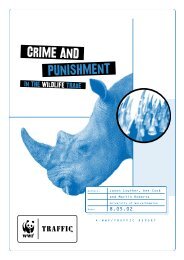In full swing: assessment of trade in orang-utans and ... - WWF UK
In full swing: assessment of trade in orang-utans and ... - WWF UK
In full swing: assessment of trade in orang-utans and ... - WWF UK
Create successful ePaper yourself
Turn your PDF publications into a flip-book with our unique Google optimized e-Paper software.
<strong>In</strong> all, data was collected from 97 studies on the presence or absence <strong>of</strong> gibbons <strong>and</strong> <strong>orang</strong>-<strong>utans</strong> at bird markets (see<br />
Annex I, Table 13). Comb<strong>in</strong>ed, these yielded data from 35 bird markets <strong>in</strong> 22 cities, represent<strong>in</strong>g 355 visits from the<br />
period 1994-2003. For each <strong>of</strong> the 97 studies the number <strong>of</strong> visits to s<strong>in</strong>gle bird markets was noted as well as, when<br />
available, the number <strong>of</strong> months the study lasted. For example, a study that made two visits <strong>in</strong> April <strong>and</strong> May was<br />
categorized as hav<strong>in</strong>g a duration <strong>of</strong> two months, unless the first visit was at the very end <strong>of</strong> April <strong>and</strong> the second at the<br />
very beg<strong>in</strong>n<strong>in</strong>g <strong>of</strong> May, <strong>in</strong> which case it was entered <strong>in</strong> the data base as hav<strong>in</strong>g a duration <strong>of</strong> just one month. A study<br />
that made 16 weekly visits <strong>in</strong> the period May-August was categorized as hav<strong>in</strong>g a duration <strong>of</strong> four months, just as one<br />
that would have four monthly visits to these markets. Several studies or monitor<strong>in</strong>g schemes visited the same markets<br />
more than once per month. The number <strong>of</strong> visits made per month was related to the length <strong>of</strong> the study. That is,<br />
especially those studies that monitor markets over a long period <strong>of</strong> time were more likely to make multiple visits per<br />
month. Although multiple visits quite possibly do <strong>in</strong>crease the chance <strong>of</strong> observ<strong>in</strong>g those <strong>in</strong>dividuals that are not<br />
openly displayed, it is also highly likely that dur<strong>in</strong>g these visits the same <strong>in</strong>dividuals were encountered multiple times.<br />
As such these visits could not be considered <strong>in</strong>dependent.<br />
The issue <strong>of</strong> <strong>in</strong>dependence <strong>of</strong> data rema<strong>in</strong>s when s<strong>in</strong>gle markets are visited over several (consecutive) months. However,<br />
for analysis <strong>of</strong> market data, the number <strong>of</strong> survey months was considered a more appropriate unit <strong>of</strong> survey effort than<br />
number <strong>of</strong> visits. Only if detailed data were available on the turn-over <strong>of</strong> gibbons <strong>and</strong> <strong>orang</strong>-<strong>utans</strong> at markets, <strong>and</strong> how<br />
<strong>in</strong>dividuals are moved with<strong>in</strong> <strong>and</strong> between markets, would the issue <strong>of</strong> <strong>in</strong>dependence <strong>of</strong> data be able to be settled, <strong>and</strong><br />
would enable a more <strong>in</strong>formed decision to be made on what the most appropriate unit <strong>of</strong> survey effort would have been.<br />
Unfortunately these data were not available nor was it able to be collected; therefore the default unit used is survey<br />
months.<br />
All prices were converted to USD at the appropriate exchange rate at the time the data were collected. For this, the<br />
foreign currency exchange website: http://www.o<strong>and</strong>a.com/convert/classic was used. <strong>In</strong> addition, the local currency,<br />
<strong>In</strong>donesian Rupiah (IDR) is listed next to the converted USD price.<br />
Statistical analysis<br />
Comparatively large data sets were analysed us<strong>in</strong>g parametric tests after the data were checked for normality. When data<br />
sets were small or showed a non-normal distribution, <strong>in</strong> order to <strong>in</strong>crease readability, <strong>in</strong>stead <strong>of</strong> transform<strong>in</strong>g the data to<br />
normalize them, non-parametric test were used. As far as possible, <strong>in</strong> the figures, open symbols were used when the<br />
relationship between two variables was significant at the 5% level, <strong>and</strong> filled symbols when this was not the case.<br />
Mortality rates due to <strong>trade</strong><br />
Based on the Results section concern<strong>in</strong>g the species composition <strong>and</strong> numbers <strong>in</strong> bird markets <strong>and</strong> wildlife rescue<br />
centres, the orig<strong>in</strong> <strong>of</strong> gibbons <strong>and</strong> <strong>orang</strong>-<strong>utans</strong> arriv<strong>in</strong>g at wildlife rescue centres, <strong>and</strong> the species composition <strong>and</strong><br />
orig<strong>in</strong> <strong>in</strong> zoological gardens, an attempt was made to model the total number <strong>of</strong> gibbons <strong>and</strong> <strong>orang</strong>-<strong>utans</strong> that are<br />
extracted from the wild annually. These figures could then be compared with the estimates <strong>of</strong> the total wild population<br />
to allow an <strong>assessment</strong> to be made <strong>of</strong> the impact <strong>of</strong> <strong>trade</strong> on the conservation <strong>of</strong> gibbons <strong>and</strong> <strong>orang</strong>-<strong>utans</strong>. For each<br />
population present at bird markets, rescue centres <strong>and</strong> zoos, parameters <strong>in</strong>cluded <strong>in</strong> this model were:<br />
1. Estimated (markets) or observed (rescue centres <strong>and</strong> zoos) number <strong>of</strong> <strong>in</strong>dividuals present.<br />
2. Coverage as a percentage <strong>of</strong> the total number <strong>of</strong> bird markets, rescue centres <strong>and</strong> zoos present on Java <strong>and</strong> Bali.<br />
For the rescue centres, this was based on the percentage <strong>of</strong> the regencies from where <strong>in</strong>dividuals were received.<br />
IN FULL SWING:ASSESSMENT OF TRADE IN ORANGUTANS AND GIBBONS ON JAVA AND BALI,INDONESIA 15


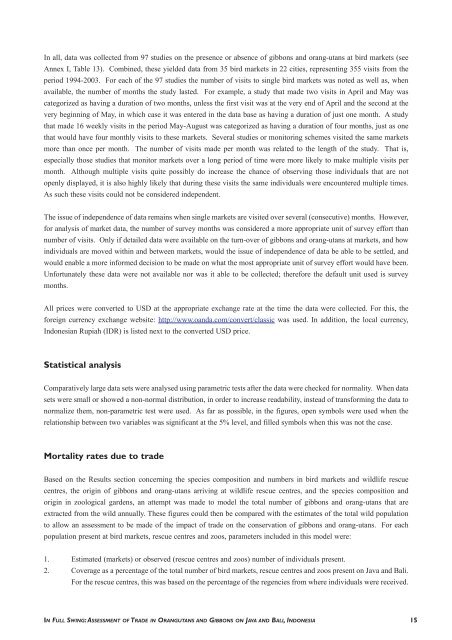
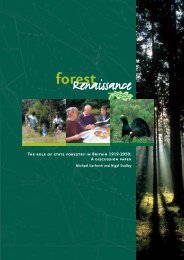
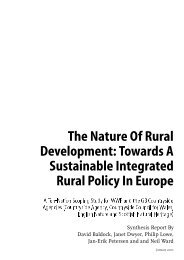
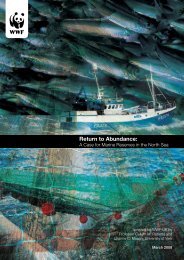
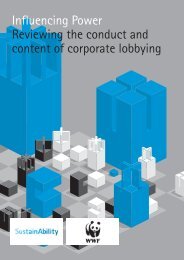
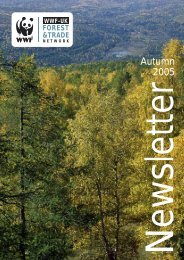

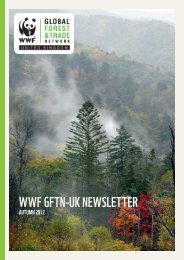
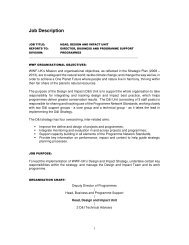
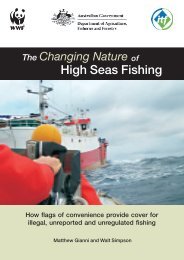
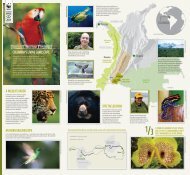
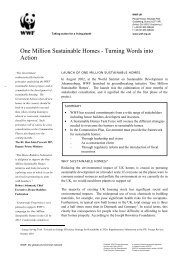
![[PDF] Causes for concern: chemicals and wildlife - WWF UK](https://img.yumpu.com/31929970/1/184x260/pdf-causes-for-concern-chemicals-and-wildlife-wwf-uk.jpg?quality=85)
